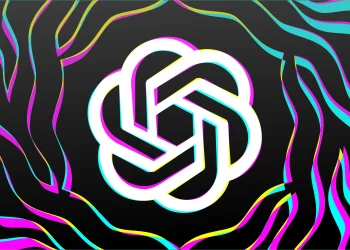As AI technology continues to evolve, many users are curious about ChatGPT’s ability to analyze images. While ChatGPT is a powerful text-based AI model capable of generating and understanding natural language, it does not natively support image analysis. ChatGPT is designed for tasks involving text, and its capabilities are limited to processing and generating written content.
However, OpenAI offers other models and tools, such as DALL·E and CLIP, that are specifically designed to handle image inputs. In this article, we’ll explore ChatGPT’s limitations in image analysis and how you can combine it with other OpenAI tools for image-related tasks.
1. ChatGPT’s Core Functionality: Text-Based Processing
ChatGPT is primarily designed for text-based tasks like:
- Answering questions
- Generating essays
- Writing code
- Creating content
It excels in processing, generating, and understanding natural language, but it cannot process or understand images directly. This means that ChatGPT cannot analyze, interpret, or modify images on its own.
2. OpenAI’s Image Processing Models: CLIP and DALL·E
Although ChatGPT cannot analyze images, OpenAI has developed other models that handle image-related tasks. These models can process visual data and even generate images based on text descriptions. The two main models that support image-related tasks are:
- CLIP (Contrastive Language–Image Pretraining):
CLIP is an AI model that can understand both images and text. It works by learning to associate images with text and can analyze images by comparing them to a large dataset of textual descriptions. CLIP is capable of identifying and interpreting images based on the textual context it has been trained on. However, CLIP is not integrated into ChatGPT and operates as a separate tool. - DALL·E:
DALL·E is another model developed by OpenAI that is capable of generating images from text descriptions. It uses a combination of neural networks and can create highly detailed images based on written prompts. While DALL·E is not designed for traditional image analysis (e.g., detecting objects or identifying features in an image), it can generate and transform visual content based on the descriptions provided.
3. Using ChatGPT for Image Analysis with Third-Party Tools
While ChatGPT cannot directly analyze images, you can use it in combination with other AI tools to achieve image analysis tasks. For instance:
- Image Recognition Tools:
You can use third-party image recognition tools such as Google Vision AI or Clarifai, which can analyze the content of images, detect objects, and categorize scenes. Once the image is analyzed, ChatGPT can assist by providing explanations, generating captions, or creating stories based on the image data. - Combining CLIP with ChatGPT:
If you’re working with OpenAI’s CLIP model, you can use it to analyze images and then pass the textual descriptions generated by CLIP to ChatGPT. ChatGPT can then interpret the descriptions, answer questions about the images, or provide context to the visual content.
4. The Future of Image Analysis with ChatGPT
As AI technology advances, it’s possible that future versions of ChatGPT will be integrated with image processing capabilities. OpenAI is continually improving its models, and image analysis may become a native feature in future iterations of ChatGPT. This would allow for more seamless integration of text and image analysis, where users could interact with the model using both text and images simultaneously.
5. Limitations of ChatGPT’s Image Analysis
- No Native Image Input:
ChatGPT cannot process or analyze images directly. It is a text-only model, and any analysis of images requires external tools or integrations. - Lack of Visual Recognition:
ChatGPT lacks the capability to “see” images or perform visual tasks such as object recognition, facial detection, or image classification. - Dependency on External Models:
To analyze images, you must rely on tools like CLIP or image recognition software, which require separate setups.
Conclusion
ChatGPT itself does not have the capability to analyze images. It excels in processing and generating text, but it cannot interpret visual data directly. However, by using other OpenAI models like CLIP or integrating third-party tools, you can analyze images and then leverage ChatGPT to interpret, describe, or generate text based on the image data.
As AI continues to evolve, we may see more integrated models in the future that combine text and image analysis capabilities, making it easier to work with both forms of media simultaneously.










